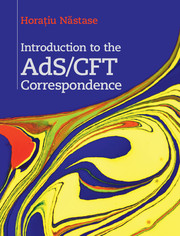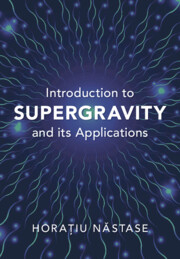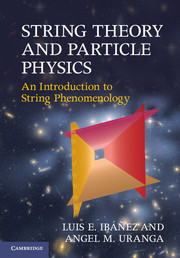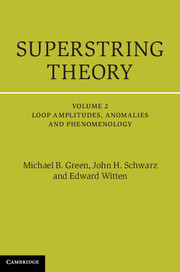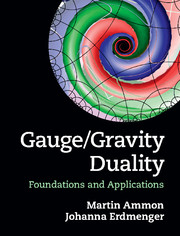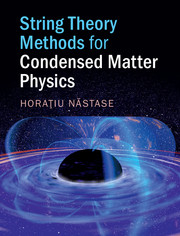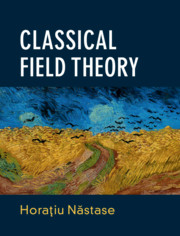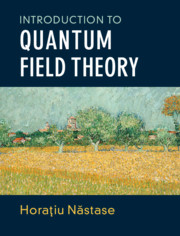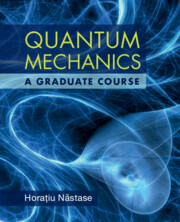Introduction to the AdS/CFT Correspondence
Providing a pedagogical introduction to the rapidly developing field of AdS/CFT correspondence, this is one of the first texts to provide an accessible introduction to all the necessary concepts needed to engage with the methods, tools and applications of AdS/CFT. Without assuming anything beyond an introductory course in quantum field theory, it begins by guiding the reader through the basic concepts of field theory and gauge theory, general relativity, supersymmetry, supergravity, string theory and conformal field theory, before moving on to give a clear and rigorous account of AdS/CFT correspondence. The final section discusses the more specialised applications, including QCD, quark-gluon plasma and condensed matter. This book is self-contained and learner-focused, featuring numerous exercises and examples. It is essential reading for both students and researchers across the fields of particle, nuclear and condensed matter physics.
- Enables students and researchers to carry out and engage with research on AdS/CFT without prerequisite, in-depth theoretical knowledge
- Featuring exercises and examples in every chapter, this is one of the first texts to provide an explanatory overview of the rapidly developing field of AdS/CFT
- Accessible to readers across various research areas as a result of the multidisciplinary and self-contained approach
Reviews & endorsements
'A remarkably comprehensive introduction to an important subject, which should be accessible to those with some basic background in quantum field theory and general relativity.' Michael Dine, University of California, Santa Cruz
'Horaƫiu Năstase has managed to capture both the depth and breadth of the gauge/gravity duality in a wonderfully pedagogical manner. I can very well see Introduction to the AdS/CFT Correspondence becoming a standard reference for both graduate students as well as seasoned researchers in the field.' Jeff Murugan, University of Cape Town
'A welcome survey of what has become a broad and well-established area of research … a useful reference for students entering the field as well as for experienced practitioners, both in string theory and in other communities.' Diego Trancanelli, University of São Paulo
'A pedagogical book on this sophisticated and rapidly developing subject is clearly welcome. Horaţiu Năstase's very readable Introduction to the AdS/CFT Correspondence is such a book. Written by a well-known expert on the AdS/CFT correspondence and its applications, the book is intended for graduate students and researchers who want to be acquainted with the new holographic techniques. … many details presented by Năstase are not available in existing books … [The] book is written in a student-friendly style with detailed explanations and many worked-out calculations. Each chapter ends with a summary of important concepts and a set of exercises. It will certainly be of great help both to those teaching an advanced graduate course on the AdS/CFT correspondence and to students or researchers planning to learn it by themselves. Introduction to AdS/CFT Correspondence is a valuable addition to the small set of existing books on the topic.' Alfonso V. Ramallo, Physics Today
Product details
September 2015Hardback
9781107085855
453 pages
253 × 193 × 24 mm
1.15kg
43 b/w illus.
Available
Table of Contents
- Preface
- Introduction
- Part I. Background:
- 1. Elements of quantum field theory and gauge theory
- 2. Basics of general relativity. Anti-de Sitter space
- 3. Basics of supersymmetry
- 4. Basics of supergravity
- 5. Kaluza–Klein dimensional reduction
- 6. Black holes and p-branes
- 7. String theory actions and spectra
- 8. Elements of conformal field theory
- 9. D-branes
- Part II. Basics of AdS/CFT for N = 4 SYM vs AdS5 × S5:
- 10. The AdS/CFT correspondence: motivation, definition and spectra
- 11. Witten prescription and 3-point correlator calculations
- 12. Holography in Lorentzian signature: Poincaré and global
- 13. Solitonic objects in AdS/CFT
- 14. Quarks and the Wilson loop
- 15. Finite temperature and N = 4 SYM plasmas
- 16. Scattering processes and gravitational shockwave limit
- 17. The pp-wave correspondence
- 18. Spin chains
- Part III. AdS/CFT Developments and Gauge-Gravity Dualities:
- 19. Other conformal cases
- 20. The 3 dimensional ABJM model vs. AdS4 × CP3
- 21. Gravity duals
- 22. Holographic renormalization
- 23. RG flow between fixed points
- 24. Phenomenological gauge-gravity duality I: AdS/QCD
- 25. Phenomenological gauge-gravity duality II: AdS/CMT
- 26. Gluon scattering: the Alday–Maldacena prescription
- 27. Holographic entanglement entropy: the Ryu–Takayanagi prescription.

